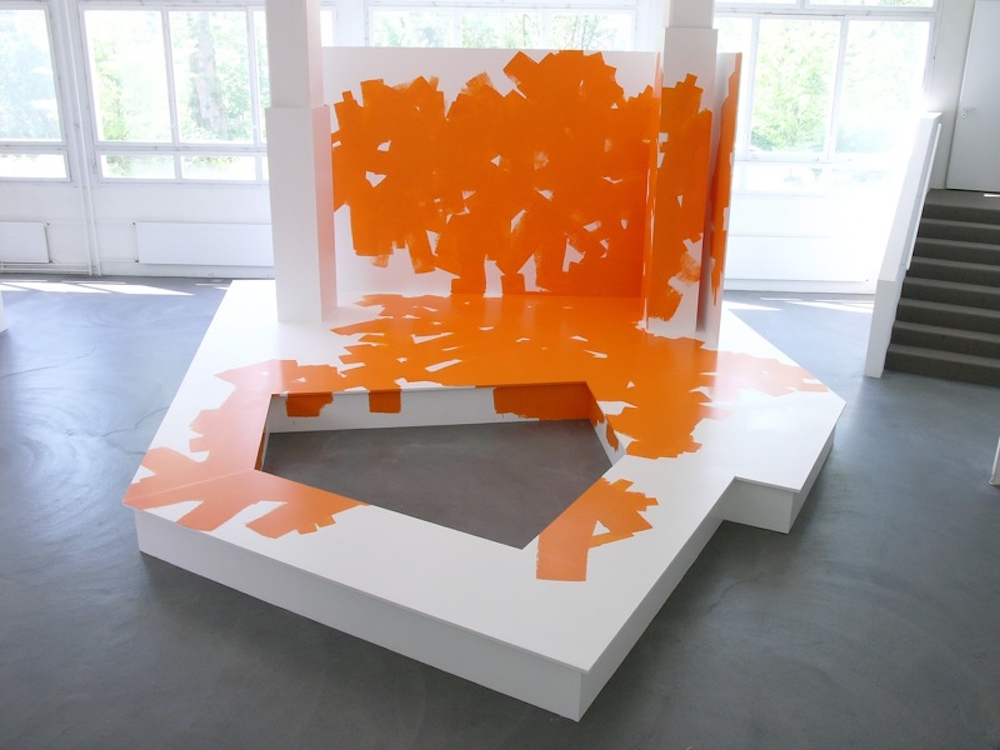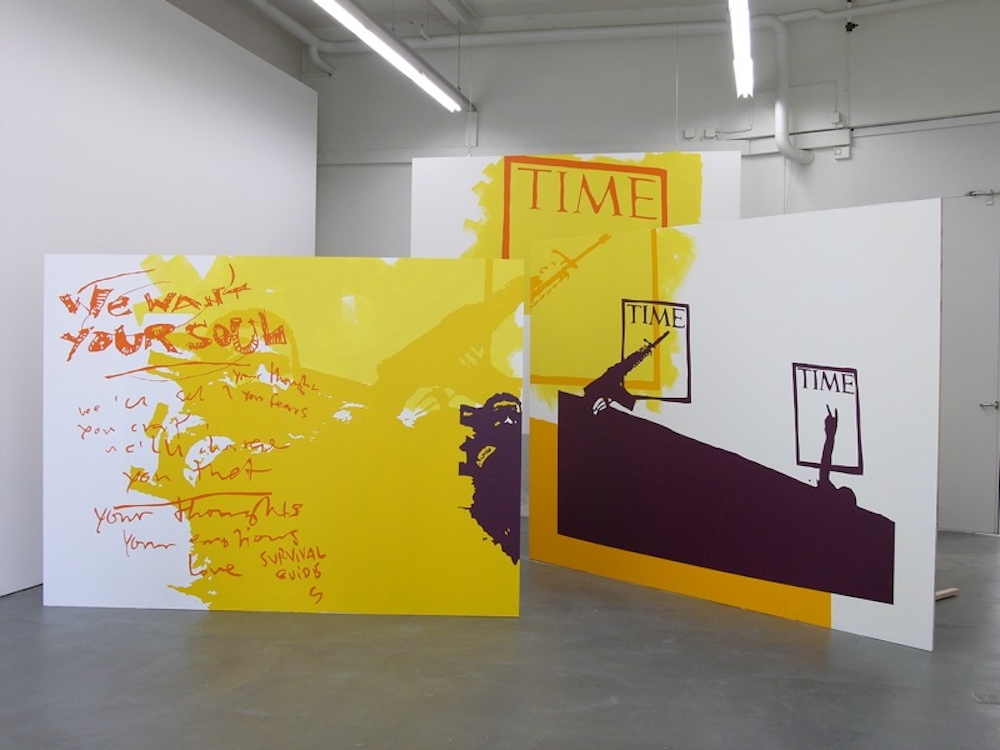Jan Christensen
Forward Momentum
6.5. —
2.7.2006


At the Basel Museum Night 2006, Jan Christensen, who was born in 1977 in Copenhagen and lives and works in Berlin, exhibited his installation Exit Basel, with its illuminated sign, in an outdoor setting at Kunsthaus Baselland in anticipation of his first solo show in an art center. After obtaining a scholarship from The Pollock-Krasner Foundation Inc. in New York, the Ingrid Lindbäck Langaard Foundation in Oslo, as well as his artist-in-residence periods at the Irish Museum of Modern Art in Dublin und FRAC des Pays de la Loire in Nantes, Kunsthaus Baselland now puts on the first comprehensive show devoted to this artist entitled Forward Momentum.
The salient feature of Jan Christensen’s oeuvre is its extraordinary approach to art-making. Both humorously and intelligently, the artist deconstructs individual elements pertaining to art production, renders them autonomous, and transforms them into the actual work. More Titles For Which I Don’t Know What To Make, for example, is a mural painting generated from various notes for titles of his works. Oversized and painted onto the wall in different typefaces, the list of potential titles becomes a picture in itself. Painting Myself into a Corner is the artist’s way of psychologically coping with the feeling of being pushed into an awkward situation. It may be construed both as a personal and a general statement on the position of art or painting.
Christensen often incorporates graphic elements in his works that become a signature in the form of different typefaces or brushstrokes. Beat Competition of 2005 or c/o Atle Gerhardsen of 2006 are ‘written paintings’ that crash down on viewers from huge walls like a visualized echo. These two works are both entitled Everybody Thinks That It Means Too Much, thus drawing our attention again to the actual meaning of words. But both the title and the meaning of words elude any unambiguous interpretation. They merely provide vague evidence or references to the genesis of individual works or their positioning, or they question the search for the attribution of meaning per se. By means of a DVD loop in Christensen’s video No Signal, the state displayed whenever a projector is ‘empty’, i.e. has no visuals to show, is turned into the actual picture. Christensen appropriates existing visual material and elevates it to the status of a selected picture so that it can make a contribution to discussions about art.
Apart from opting for appropriation and interdisciplinary methods, Christensen often cooperates with other artists, or is invited to work together with them. Networking with other artists and delving into their approaches allows him to come up with complex conceptual works that may take on highly diverse forms. In her catalogue essay Eva Scharrer calls his style “hyper-textual”. “There is a constant blending of practices, a linking of contexts and meanings on multiple layers, and a fluent back and forth between inviting and being invited.”
For the show at Kunsthaus Baselland, Christensen has merged the works he created previously into an overall presentation: “I would like to re-visit some of the previous works or ideas. I will bring them back for a moment, and connect elements from different pieces and include parts of sketches and fragments of new ideas. (...) To me this will be a moment of pause in order to consider the situation and look back, before moving ahead”, says the artist in the interview contained in the catalogue.
Such a “moment of pause in order to consider the situation and look back, before moving ahead” already occurred in Jan Christensen’s earlier work Exit Basel. With it he responded to the challenging urban setting around Kunsthaus Baselland. Situated along the borderline separating an urban from a rural environment, this former industrial building is embedded in a commercial area increasingly occupied by the sprawling city of Basel. For the wall of the nearby Mercedes dealership, which much impairs the visibility of Kunsthaus Baselland, Christensen designed an enlarged emergency exit logo modeled on those seen inside the exhibition rooms. The stylized figure trying to escape a fire is turned such that it runs towards the entrance of Kunsthaus Baselland, toying with the idea of alleviating or defusing a putative emergency situation by means of art. In an outdoor environment, the oversized logo appears absurd — what is this figure running away from, and why? What is more, its absurdity also stems from the fact that it is placed outdoors, in a ‘safe’ area. This reversal of inside and outside, of safety and insecurity, and the palpable impact of this sign (which is really a signal as well as orientation marker) — all of this has an effect on viewers, i.e. on people who virtually drown in a sea of symbols and signs. Exit Basel is a hard-to-miss beacon leading you to the safe haven of art. Basel’s exit is now located at Kunsthaus Baselland.
Text by Sabine Schaschl